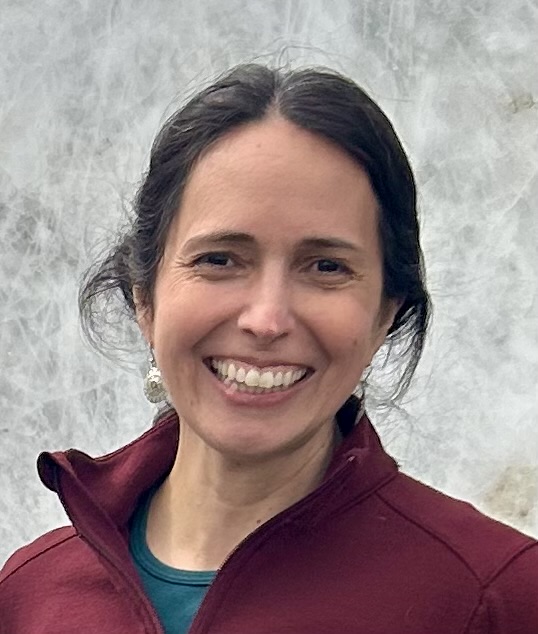Title: Research Geophysicist
Country/Region: USA
Period: 2023/05/16 - 2023/06/01
Theme: Volcano monitoring and eruption forecasting and response strategies.
Host: Mie Ichihara
Introduction: Stephanie Prejean is a research scientist with the U.S. Geological Survey. Her research is focused on eruption forecasting, volcano monitoring, and understanding the physical processes that trigger seismicity at active volcanoes. Stephanie joined the USGS Volcano Science Center in 2002 immediately after completing her PhD in geophysics at Stanford University. After two years with the USGS in Menlo Park, CA, she moved to Anchorage, Alaska to study more active but less well monitored volcanoes at the USGS Alaska Volcano Observatory. In 2015 she transitioned to working with the USGS-USAID Volcano Disaster Assistance Program, which assists local scientists with volcanic unrest and capacity building around the world. She has worked closely with colleagues in many countries in Latin America and Southeast Asia. She currently serves as leader of the geophysics group in VDAP.
Research Report:
Research Report
Earthquake Research Institute, University of Tokyo
16/05/2023-02/06/2023
Stephanie Prejean
US Geological Survey, USAID
Volcano Disaster Assistance Program
General Description of Work:
I was a guest scientist at the Earthquake Research Institute (ERI) of the University of Tokyo
from May 16, 2023 to June 1, 2023 in order to collaborate with Dr. Mie Ichihara and her
colleagues. During this brief visit we discussed strategies for remote volcano monitoring based
on our shared interest and experience in studying seismic and infrasonic data from eruptions,
including the 2022 eruption of Hunga Tonga-Hunga Ha’apai volcano. On May 19, I presented a
talk at ERI titled ‘Operational Eruption Forecasting: New Directions in VDAP Seismology’. In
this talk I described common challenges that we face in eruption forecasting and several recent
research projects of the USGS VDAP seismologists that address some of the challenges. I
attended the 2023 Japan Geophysical Union meeting May 21-26.
Research Project:
My research is focused on improving volcanic eruption forecasting and monitoring strategies. In
the USGS-USAID Volcano Disaster Assistance Program (VDAP), we frequently assist
international partner organizations in designing geophysical networks and analysis strategies for
eruption detection and monitoring, often for newly active or poorly monitored volcanic systems.
My work at ERI was focused specifically on strategies for remote monitoring of unmonitored
volcanoes. Thousands of remote volcanoes around the globe have the potential to erupt
catastrophically, yet they lack local monitoring networks due to geographical, logistical, and
financial limitations. The problem is particularly acute for island volcanoes. Although satellite
volcano monitoring strategies are advancing rapidly, the detection of seismic precursors remains
critical to successful eruption forecasting.
Recent studies employ new techniques to track seismicity at volcanoes remotely with surprising
precision. For example, Kinter et al. (2022) retrospectively detected earthquake precursors to the
VEI 6 eruption of Hunga Tonga-Hunga Ha’apai volcano using seismic stations located more
than 700 km distant. Concurrently, other studies have used simple but effective techniques to
detect low-amplitude subtle seismic signals that are precursors to eruption (Ichihara et al., 2023).
Together these types of techniques could be more widely and consistently applied to monitor
remote volcanoes more effectively. To do so efficiently however requires international
coordination and data standards.
Earthquake Research Institute, University of Tokyo
16/05/2023-02/06/2023
Stephanie Prejean
US Geological Survey, USAID
Volcano Disaster Assistance Program
General Description of Work:
I was a guest scientist at the Earthquake Research Institute (ERI) of the University of Tokyo
from May 16, 2023 to June 1, 2023 in order to collaborate with Dr. Mie Ichihara and her
colleagues. During this brief visit we discussed strategies for remote volcano monitoring based
on our shared interest and experience in studying seismic and infrasonic data from eruptions,
including the 2022 eruption of Hunga Tonga-Hunga Ha’apai volcano. On May 19, I presented a
talk at ERI titled ‘Operational Eruption Forecasting: New Directions in VDAP Seismology’. In
this talk I described common challenges that we face in eruption forecasting and several recent
research projects of the USGS VDAP seismologists that address some of the challenges. I
attended the 2023 Japan Geophysical Union meeting May 21-26.
Research Project:
My research is focused on improving volcanic eruption forecasting and monitoring strategies. In
the USGS-USAID Volcano Disaster Assistance Program (VDAP), we frequently assist
international partner organizations in designing geophysical networks and analysis strategies for
eruption detection and monitoring, often for newly active or poorly monitored volcanic systems.
My work at ERI was focused specifically on strategies for remote monitoring of unmonitored
volcanoes. Thousands of remote volcanoes around the globe have the potential to erupt
catastrophically, yet they lack local monitoring networks due to geographical, logistical, and
financial limitations. The problem is particularly acute for island volcanoes. Although satellite
volcano monitoring strategies are advancing rapidly, the detection of seismic precursors remains
critical to successful eruption forecasting.
Recent studies employ new techniques to track seismicity at volcanoes remotely with surprising
precision. For example, Kinter et al. (2022) retrospectively detected earthquake precursors to the
VEI 6 eruption of Hunga Tonga-Hunga Ha’apai volcano using seismic stations located more
than 700 km distant. Concurrently, other studies have used simple but effective techniques to
detect low-amplitude subtle seismic signals that are precursors to eruption (Ichihara et al., 2023).
Together these types of techniques could be more widely and consistently applied to monitor
remote volcanoes more effectively. To do so efficiently however requires international
coordination and data standards.
View All
Fiscal Year: 2023
Fiscal Year: 2023


